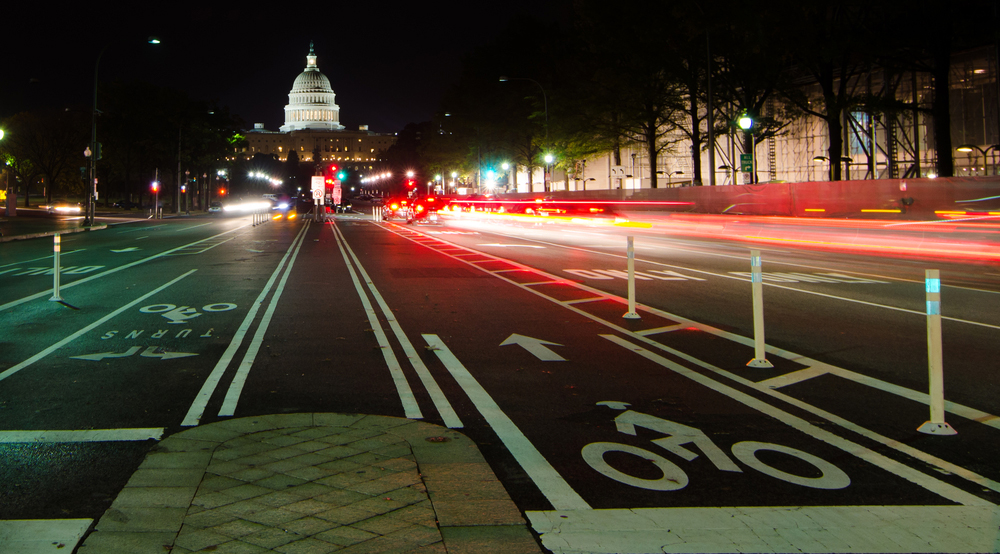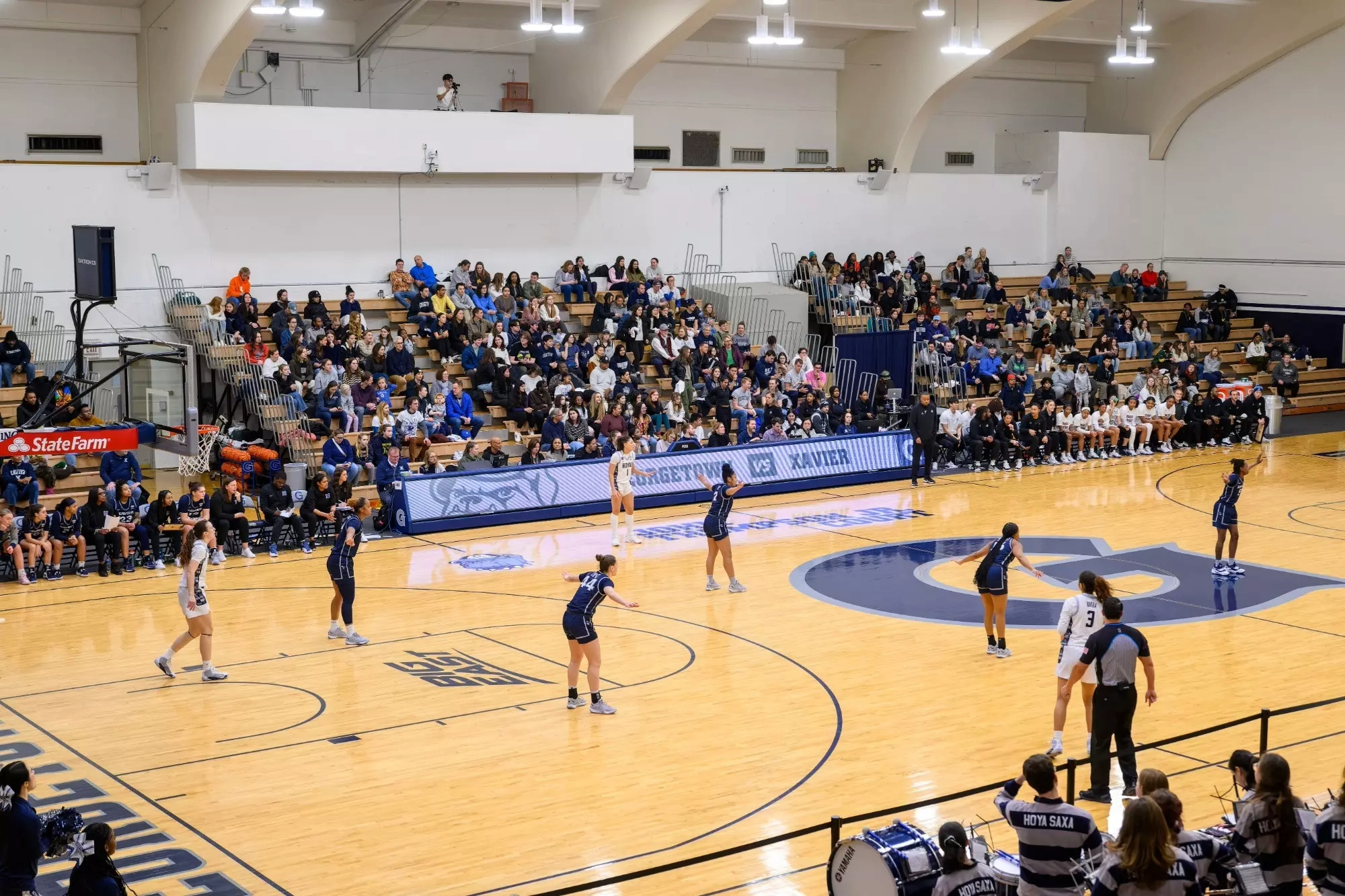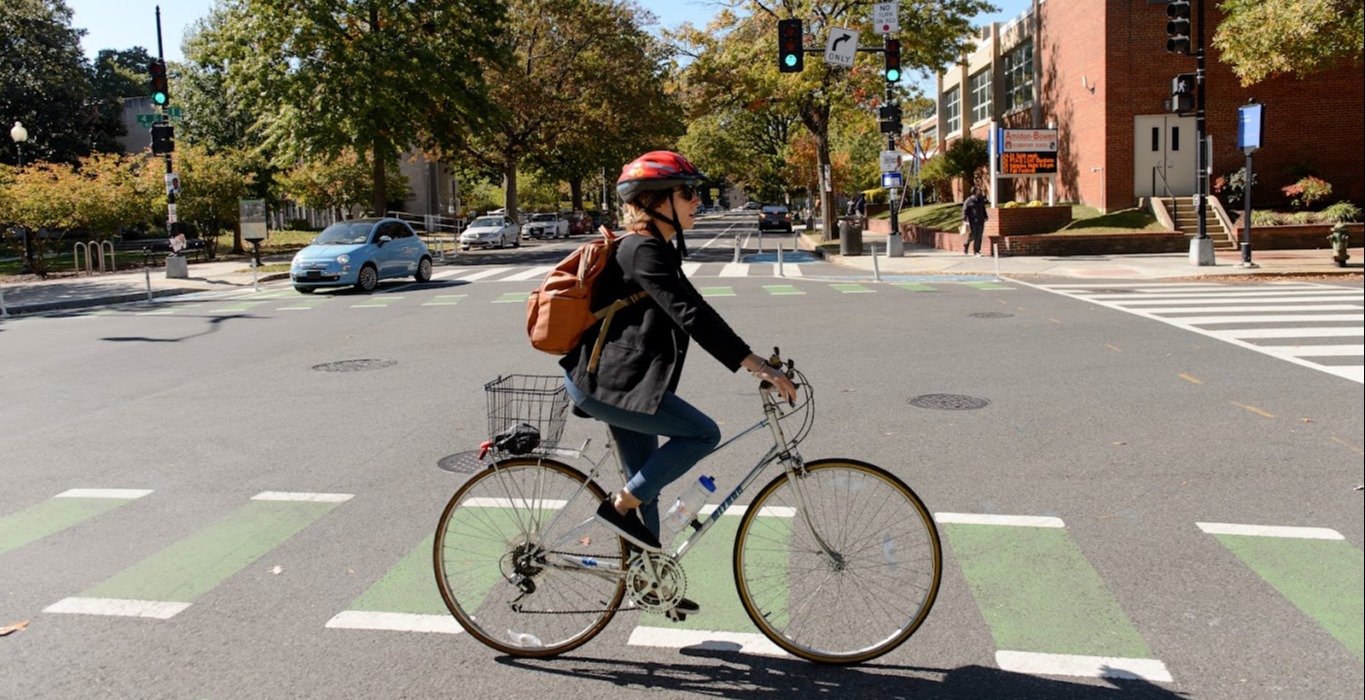On Sunday, November 1 at 2am, we will depart from Daylight Savings and fall back to Eastern Standard Time. According to our friends at National Geographic, “Daylight saving time in the U.S. began in 1918 as an attempt to save energy during the throes of World War I, following Germany's earlier shift in 1916. The idea was to maximize sunlight hours during the longer days of the year by taking an hour of morning sun, when many are sleeping, and adding it to the end of the day.”
... And the U.S. has stuck to this "timely" tradition ever since. Returning to Eastern Standard Time will make our evening commutes a lot darker, a lot sooner. Due to the coronavirus (COVID-19), it’s especially essential to commute with care as you travel in the evenings. Regardless of how you’re getting around the District, always wear a face mask or covering whenever you leave home and practice safe social distancing.
Review the additional rules and tips below for bicyclists and pedestrians to be safe and be seen.
- A white headlight that is visible for 500 feet and a red reflector or taillight visible from 300 feet are required by law when riding at night.
- Wear bright colors and/or reflective gear.
- Add sidelights or reflectors on wheels to be more visible.
- A stronger headlight (300 lumens or above) is recommended on trails, where light is low and is much darker at night compared to city streets.
- If using a dockless vehicle or personal bike, be sure to park in well-lit areas.
- Wear light-colored or reflective clothing, especially in stormy weather or at night.
- At crosswalks, only cross when the "start crossing" symbol is on. It's illegal to enter a crosswalk when a steady "Don't Walk" symbol or flashing red hand symbol is on. If you are close to an intersection with a traffic signal, you must cross at the crosswalk.
- Yield to motor vehicles when crossing mid-block.
- Do not walk in the street if a sidewalk is provided.
- Do not walk while being distracted by cell phones or other electronic devices.
- At intersections, make sure motorists see you before you step off the curb.
Additional Resources
- The Washington Area Bicyclist Association hosts a variety of online and in-person classes and events for all ages and stages. If you want to improve your biking skills, visit waba.org.
- If you plan on using any of the DC trails, be sure to review these tips on how to practice safe social distancing and proper trail etiquette.
- Late-night workers can apply for Metro and Lyft's After-Hours Commuter Service Program to get a ride to/from work between midnight and 4am. Metro will cover the first $6 of your ride. Find more late-night commuting solutions here.
- If you experience or see unsafe conditions while walking or biking, please dial 3-1-1, text DC311, download the DC311 app, or visit the online portal. Learn more about 311 for DC city services here.
By the year 2024, the District of Columbia plans to reach zero fatalities and serious injuries to travelers of our transportation system through more effective use of data, education, enforcement, and engineering. Learn more at dcvisionzero.com.





.jpg)


